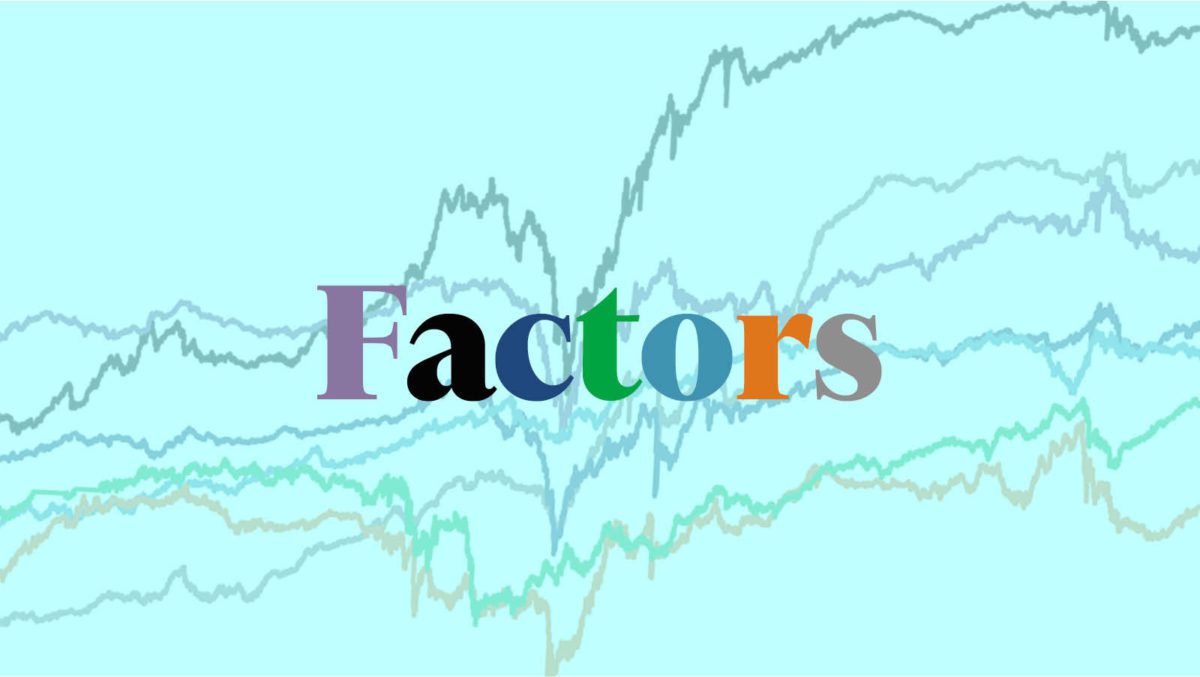Value, growth, income or momentum?
The investment industry is full of terms that few outsiders understand. Whilst not deliberate, it has becoming increasingly evident that they are doing little to increase the education of end consumers and in fact are more likely to confuse. Using the word ‘drawdown’ for instance, which is a complicated way to say ‘your shares are now worth less than before’ or even using the world ‘yield’ instead of income, given both are very different things. One issue that came up recently in discussions with both clients and other industry participants is ‘factor’ investing.
The concept has grown in popularity in the institutional world with industry funds and exchange traded funds relying on ‘factor-based’ strategies to deliver returns. Factor investing has been one of the fastest growing sectors of global asset markets over the last five years; but what does it actually mean?
The concept may sound highly complex, but it couldn’t be simpler. If you have ever invested in an index fund from the likes of Vanguard or Blackrock, or purchased units in an ETF on the ASX, you are a ‘factor’ investor. Put simply, ‘factors’ are defined as the specific drivers, inputs, or measures that have influenced returns across different asset classes over time. In the case of an index fund or ETF, these portfolios of shares are weighted according to the market capitalisation of each company, otherwise known as the ‘size factor’.
As you would appreciate, there are many factors that can influence the movement of share prices in the US, so ‘factor’ investing seeks to identify those which are measurable and trackable. Many experts flag factors from sixteen to sixty, spanning economic and ‘style’ inputs, for the purpose of this article we stick to the latter. The six key ‘style’ factors which are most common in this new world of investing are:
- Value – Involves finding the old-fashioned ‘undervalued’ company based on traditional measures like the Price Earnings Ratio, or Net Tangible Assets;
- Size – Assesses the relative performance between, small, large, and medium- sized companies;
- Quality – An increasingly common measure, includes assessments of a company’s ability to repay its debt and the cash flow it’s producing;
- Momentum – Involves assessing companies based on the movement in their share price of the last say 6 and 12 months;
- Volatility – Low volatility measures an individual stocks daily volatility compared to the benchmark index;
- Carry – Another confusing financial term, carry simply refers to the dividends or income an investment offers.
So why are factors important?
To put it simply, they appear to work. Factor investing was made famous by groups such as Dimensional Fund Advisors and BlackRock in recent years, with the concept grounded in academic theory and research.
Each of the factors outlined above have been measured in almost every way imaginable using every piece of financial data on record in the US, Australia, and around the world. Through extensive computer programming and testing, researchers are able to determine which factors have delivered the strongest returns over different periods of time and which combination works best. Obviously, much of this is backward looking, but as they say, the world doesn’t repeat but it does ‘rhyme’.
Factor investing is becoming known as a ‘low cost’ alternative to active management of share portfolios with data scientists and processing power replacing the qualitative analysis undertaken by portfolio managers. Two of the more proven factors over the last several decades are ‘size’ where smaller companies have consistently outperformed larger ones and ‘momentum’ where those shares whose price rose in the previous six months tended to rise in the next six months.
But of course, it isn’t perfect. If you are exposed to the wrong factors, you may significantly underperform the benchmark you are trying to replicate or beat. For instance, the value factor has underperformed significantly in recent years, with momentum clearly winning the day. On the other hand, during the pandemic, the ‘low volatility’ factor that was expected to protect portfolios actually turned out to be the opposite due to the unexpected impact on utility, infrastructure and property assets.
As much as it sounds like an alternative to active management, factor investing still requires an active input on a regular basis. The difference is the input is more data-based than on the view of humans.









